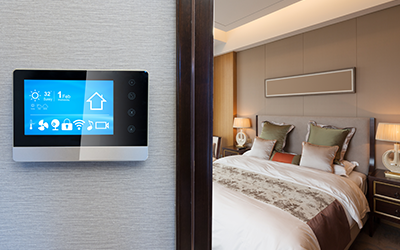
In a recent consumer health and technology survey conducted by 451 Research, a part of S&P Global Market Intelligence, it was found that retirees are increasingly using technology to improve their health monitoring and management. The survey focused on the experiences of retired and near-retired individuals to understand their attitudes, habits and spending patterns regarding technology and related products/services.
Adoption of medical technologies
The survey revealed that retirees are adopting various medical technologies to manage their health. Dedicated health monitors, such as blood pressure monitors and pulse oximeters, were found to be the top category of devices owned by retirees. These devices provide them with the ability to monitor vital signs and track health progress from the comfort of their homes. By having access to real-time data, they can proactively manage their health and seek medical attention if necessary. Additionally, smartwatches, hearing aids and fitness trackers have gained in popularity among retirees. These devices not only provide health monitoring capabilities, but also offer features such as step tracking, workout tracking and sleep tracking, enabling retirees to maintain an active and healthy lifestyle.

Preference for in-person doctor visits
While retirees still prefer in-person doctor visits for higher-quality care and trust building, many have embraced telemedicine visits and patient portals for health-related inquiries. Telemedicine visits have become increasingly popular among them, with routine checkups being the most common reason for the visit. The convenience of telemedicine allows retirees to consult with healthcare professionals without the need for travel or waiting in a doctor’s office.
This is particularly beneficial for those who may have mobility issues or live in remote areas. However, despite the rise in telemedicine usage, most still prefer in-person office visits. They believe that in-person visits provide higher-quality care, make it easier to build trust with their healthcare providers, and allow them to get lab work done at the same time. Retirees value the personal interaction and hands-on approach that comes with in-person visits. They feel that these visits provide a more comprehensive and holistic assessment of their health.
Patient portals and improved communication
Patient portals have also played a significant role in improving patient-doctor communication. Retirees have widely adopted patient portals, with just 9% of respondents saying they have not used their doctor’s patient portal at all. These portals allow users to securely access medical records, check lab results and receive doctor recommendations. Secure messaging with doctors, appointment reminders and clinical visit summaries were among the top use cases for retirees. Patient portals have streamlined communication between these individuals and their healthcare providers, making it easier to stay informed and engaged in their healthcare journey. The convenience and accessibility of patient portals have contributed to widespread adoption among retirees.
Room for improvement in device satisfaction
Although retirees are embracing technology for health monitoring and management, there is room for improvement in device satisfaction. Retirees expressed lower satisfaction rates with the health functions of their devices compared to overall satisfaction ratings. This highlights the need for further development and enhancement of health-related functionalities in these devices. Manufacturers should focus on improving the accuracy, reliability and user-friendliness of these devices to ensure retirees can effectively monitor their health and make informed decisions. By addressing these areas of improvement, manufacturers can enhance the overall user experience and satisfaction with their health monitoring devices.
Conclusion
Retirees are leveraging technology to enhance their health monitoring and management. The adoption of medical technologies, telemedicine visits and patient portals are key trends. These technologies empower retirees to take control of their health, and proactively manage their well-being. However, there is still a preference for in-person doctor visits and a hands-on approach to managing medicines. As technology continues to evolve, it is crucial to address retirees’ needs and preferences to ensure effective and efficient healthcare delivery. By continuously improving device functionalities and optimizing healthcare services, the industry can better serve the needs of retirees and provide them with the tools and resources they need to maintain their health and well-being.
Want insights on consumer technology trends delivered to your inbox? Join the 451 Alliance.
Want insights on consumer tech trends delivered to your inbox? Join the 451 Alliance.
This content may be AI-assisted and is composed, reviewed, edited and approved by S&P Global in accordance with our Terms of Service.

